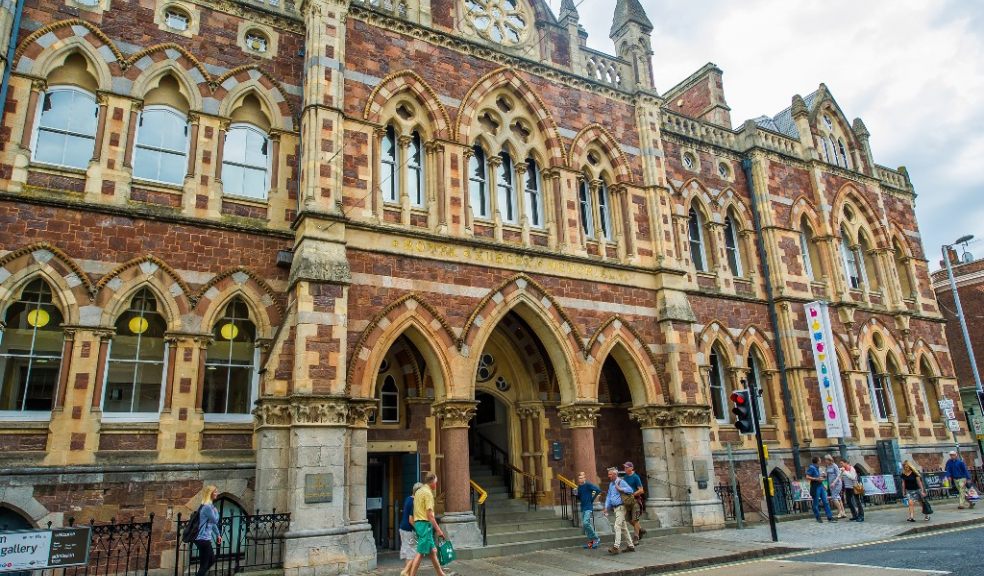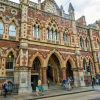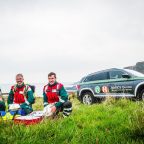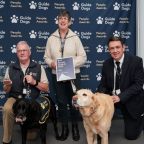
Three attractions in Devon more accessible for disabled visitors
Three heritage attractions in Devon are now able to welcome more disabled visitors through their doors than ever before.
Royal Albert Memorial Museum (RAMM), Kents Cavern and Seaton Wetlands, have introduced a full set of products to help improve accessibility for disabled and Deaf British Sign Language (BSL) users.
The products were developed by Heritage Ability, in partnership with each of the sites, to help more disabled visitors enjoy their visit by feeling more inclusive. The written tools help to ensure disabled visitors receive information in a format that aids their understanding, or by proving mobility equipment to help people access outdoor sites they were previously unable to visit.
Heritage Ability is a three-year project, funded by the National Lottery Heritage Fund, to support over 20 heritage sites in the South West to become more accessible for people with disabilities and Deaf BSL users.
The products were developed after discussions with the disabled community, on specific conditions and the barriers they face when visiting heritage sites. The produced included: BSL Tours, Easy Read Guides, Online Visual Guides, Large Print Guides, as well as Disability Awareness training for staff and volunteers. Seaton Wetlands also received an all-terrain scooter as part of the project.
BSL tours for Deaf BSL users - consist of a number of short film clips, presented by a volunteer BSL signer. The BSL tours are then transferred onto a tablet, which can then be used by visitors as they walk around the site. They are also uploaded to the Heritage Ability YouTube channel for viewing on personal devices.
Easy Read Guides are created to help people with learning disabilities understand more complex information presented at the sites. The guide is written using a simple ‘Easy Read’ format and supported with images to help clarity. The guides also include activities and points of interest.
The Online Visual Guides are also now available to view on each of the heritage site’s website. These guides are primarily aimed at autistic people and visitors with complex needs. They were created to enable visitors to plan their visit in advance, helping to reduce stress and anxiety on the day.
Large Print guides are aimed at people with visual impairments to help them see the information more clearly. These guides use many techniques to help people that suffer from Macular Degeneration or Glaucoma to view the information presented at the sites.
Staff and volunteers at the attractions were also given Disability Awareness training to help them understand how to engage better with disabled visitors. It also enabled them to identify different tools available on site that could help improve accessibility for disabled visitors.
The Heritage Ability project also provided an all-terrain mobility scooter (called a Tramper) for Seaton Wetlands, as it has large external areas of parkland. The Tramper was introduced to help visitors with permanent or temporary mobility issues travel around the park and see areas previously inaccessible to them.
Elliot Ling, Education Officer at Kents Cavern, said: “It has been great working with the Heritage Ability team over the last three years, seeing first-hand the improvements that they have made in making our site accessible to a much wider range of people. It’s amazing to see people that might not have visited before actually able to engage with the heritage.
“We’ve had great feedback from BSL users about being able to use the tablet in the cave. We’ve also had feedback from parents and teachers of autistic children that have praised the Visual Story for helping their children to prepare for their underground visit.”
Royal Albert Memorial Museum Manager, Camilla Hampshire said: “We are keen to share the city’s treasures with everyone. The Heritage Ability project has provided expert guidance and the impetus to expand our offer and make RAMM even more accessible to Disabled and Deaf BSL users. It’s all about listening to visitors, consulting experts, finding a balance and providing options to suit the widest possible range of needs. We are committed to this as an ongoing process and grateful to Heritage Ability for being a critical friend, identifying needs, giving sound advice and helping to produce the materials that disabled and Deaf BSL users have asked for.”
Heritage Ability is one of the projects managed by Living Options Devon (LOD), a user-led charity, where all of the initiatives are developed or supported by people who have a first-hand understanding of the challenges faced by disabled and Deaf people.
Heather Brown, Deputy CEO of Living Options Devon, said: “This is such an important project for LOD. It allows us to help more disabled visitors go to heritage attractions with their family and friends, and just have a fantastic day out.
“We will continue to work with our partners around the South West to help disabled people and Deaf BSL users, have the same experience on site as any other visitor. Helping sites to introduce accessible products to help gain understanding or access to areas previously unreachable.”
Tim Dafforn, Countryside Team Leader for East Devon District Council (that manage Seaton Wetlands), stated: “We are proud to be part of this project and have seen the improvements on site make such a valuable difference to visitors. The pre-visit information is first class, and we can now offer improved access allowing more people to enjoy their visit. I encourage everyone to visit Seaton Wetlands in the future. It is probably now one of the most accessible nature reserves in the South West. “

















